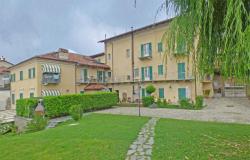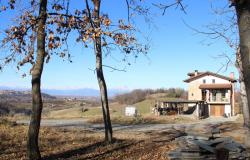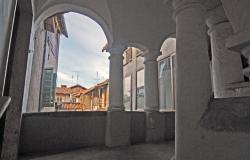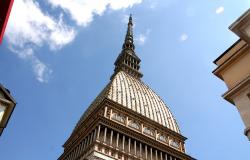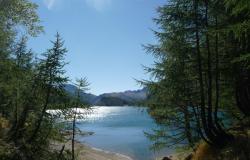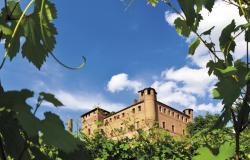Images by Vittorio Ubertone
Medieval pageantry, flag waving, beating drums, sumptuous costumes and horses galloping at breakneck speed around an Italian piazza can mean only one thing: a palio.
But this isn’t Siena, this is Asti, a small medieval town in the Monferrato hills of Piedmont, which lends its name to some of the region's best known wines and is the birthplace of Italy’s greatest tragic poets and dramatists, Vittorio Alfieri.
Asti was founded by the Ligurians who named it ‘Ast’ meaning ‘hill’ or ‘high-ground’ and in 49 BC it became an important Roman Municipium with the name Hasta Pompeia. In around 1095 Asti became a free municipality and 50 years later the city was prosperous enough to be awarded the privilege and right to mint its own coin by the Emperor Corrado III.
From then until the early 14th century, Asti enjoyed enormous wealth and power and though today the modern apartment blocks that sprawl around the town are a distraction, the city’s historic centre still retains plenty of original character.
Towers, churches and festivals
 The banking and commerce that went on in medieval Asti made it one of the most important towns in the region, with commercial networks that spread throughout France, Flanders and England. Wealthy families built towers alongside their palazzo, and the city was once known as the ‘City of One Hundred Towers’ – in the 17th century there were an incredible 125 of them, though today only a dozen or so still survive.
The banking and commerce that went on in medieval Asti made it one of the most important towns in the region, with commercial networks that spread throughout France, Flanders and England. Wealthy families built towers alongside their palazzo, and the city was once known as the ‘City of One Hundred Towers’ – in the 17th century there were an incredible 125 of them, though today only a dozen or so still survive.
Torre Troyana, also referred to as the clock tower, dates from the mid-13th century and is considered one of the most beautiful in Piedmont. Torre Rosso must also count as one of the most interesting. Situated at the end of the city’s main street, Corso Alfieri, the lower part of the tower has its origins in the Augustan period, (1st century BC) the upper part was added in the 11th century. The tower is likely to have been part of a pair which formed the main gate into the city of Hasta Pompeia. The 13th century Torre Comentina is the highest in Piedmont at 38 metres, and the Torre de Regibus, which dates from the same period, is the only octagonal tower in Asti.
The city of Asti is full of early Christian structures as well as one of the most beautiful synagogues in Italy which is open by appointment. The Gothic church of San Secondo, named for and built on the burial ground of the city’s patron saint, replaces an earlier church. The crypt dates from around the 8th century and the bell tower from the 13th, though the façade was erected in the 15th century.
Asti’s cathedral, the largest in Piedmont and one of the most important in northern Italy, was built in the 14th century at the request of the French bishop Arnaldo de Rosette. Immense, and very evocative of southern France, it contains a number of interesting 15th and 16th century paintings, frescos and carvings.
 At the other end of town, at the beginning of Corso Vittorio Alfieri, is the 12th century Rotonda of the Holy Sepulchre. Asti was one of the stations on the religous pilgrimages towards Rome and Jerusalem – the so-called Via Francigena – for those coming from northern Europe over the Alps, and next to the Rotonda lies what was a hospice for pilgrims.
At the other end of town, at the beginning of Corso Vittorio Alfieri, is the 12th century Rotonda of the Holy Sepulchre. Asti was one of the stations on the religous pilgrimages towards Rome and Jerusalem – the so-called Via Francigena – for those coming from northern Europe over the Alps, and next to the Rotonda lies what was a hospice for pilgrims.
Though festivals are held throughout the year in this region, September sees not one but three major events being held in the city:
- the well-known wine festival the Douja D’Or;
- the Festival delle Sagre which celebrates the food and wine of the Asti province;
- on the third Sunday of the month, the palio – the culmination of a year of hard work, training and dreams.
Race rituals
 Asti’s palio is little known outside Italy though the event goes back nearly 800 years, with many locals claiming it as the oldest in Italy. The first recorded race – which could have amused only the participants – took place on August 10th 1275, when soldiers from Asti descended on the rival city of Alba and galloped around the city walls tearing up vineyards and orchards.
Asti’s palio is little known outside Italy though the event goes back nearly 800 years, with many locals claiming it as the oldest in Italy. The first recorded race – which could have amused only the participants – took place on August 10th 1275, when soldiers from Asti descended on the rival city of Alba and galloped around the city walls tearing up vineyards and orchards.
There are 21 contenders in the race, the majority from the rione (district) of Asti, and the remaining from villages outside of the city. In common with so many Italian events, each jockey and horse receives a blessing by the local parish priest on the morning of the race, and at 4pm the first of three heats is run with seven horses. The riders, bareback and in the colours of their rione, race around Asti’s Piazza Alfieri to the deafening roars of thousands of spectators.
The piazza itself has none of the beauty of Siena’s Piazza del Campo, but being triangular in shape makes for quite a challenge for even the most skilful jockey. Nine horses and riders compete in the final, the victorious winner being presented with the crimson banner bearing the coat of arms of the city of Asti and of its patron saint, San Secondo.
In the week preceding the race, each rione holds a special dinner, horses are raced and practical jokes are played oncompetitors. As impressive as the race itself are the spectacular displays of the sbandieratori – the flag throwers – who compete in their own palio on the Thursday before. The towns people of Asti are fiercely proud of their sbandieratori and the English translation of ‘flag-waving’, which conjures up images of bunting, summer fetes and flags the size of a tea-plate, fails to do justice to the enormity of these flags, the grace and precision with which they are handled, and the height they reach when thrown. The insistent beating of the drums that accompany the sbandieratori adds to the air of excitement and the backdrop of Asti’s cathedral makes for an impressive evening’s entertainment.
 No festival in Italy would be complete without its parade, and Asti’s palio is no exception. Recalling Medieval Asti, the city’s golden age when it was ‘...was bursting with riches’ and its citizens were considered ‘wise and noble, rich and powerful’, the parade of more than 1200 costumed locals winds it way through the historic centre of the city in between the heats and the final of the horse race.
No festival in Italy would be complete without its parade, and Asti’s palio is no exception. Recalling Medieval Asti, the city’s golden age when it was ‘...was bursting with riches’ and its citizens were considered ‘wise and noble, rich and powerful’, the parade of more than 1200 costumed locals winds it way through the historic centre of the city in between the heats and the final of the horse race.
Faithful to medieval designs and symbolism, these are valuable costumes that have taken many months and cost many euros to make.
Action-packed month
 The Sunday before the palio sees another festival taking place which is as new as the palio is old: the Festival delle Sagre – the festival of food festivals. Established in 1974 to complement the wine festival, the Douja D’Or, the festival celebrates the food, the land and the farming people of the Asti province. An enormous open-air restaurant, the Piazza Campo del Palio plays host to 40 Asti provinces who, from 11.30am until late at night, serve one hundred specialities and wines (Piedmont has more DOC wines than any other region in Italy) to 250,000 people.
The Sunday before the palio sees another festival taking place which is as new as the palio is old: the Festival delle Sagre – the festival of food festivals. Established in 1974 to complement the wine festival, the Douja D’Or, the festival celebrates the food, the land and the farming people of the Asti province. An enormous open-air restaurant, the Piazza Campo del Palio plays host to 40 Asti provinces who, from 11.30am until late at night, serve one hundred specialities and wines (Piedmont has more DOC wines than any other region in Italy) to 250,000 people.

